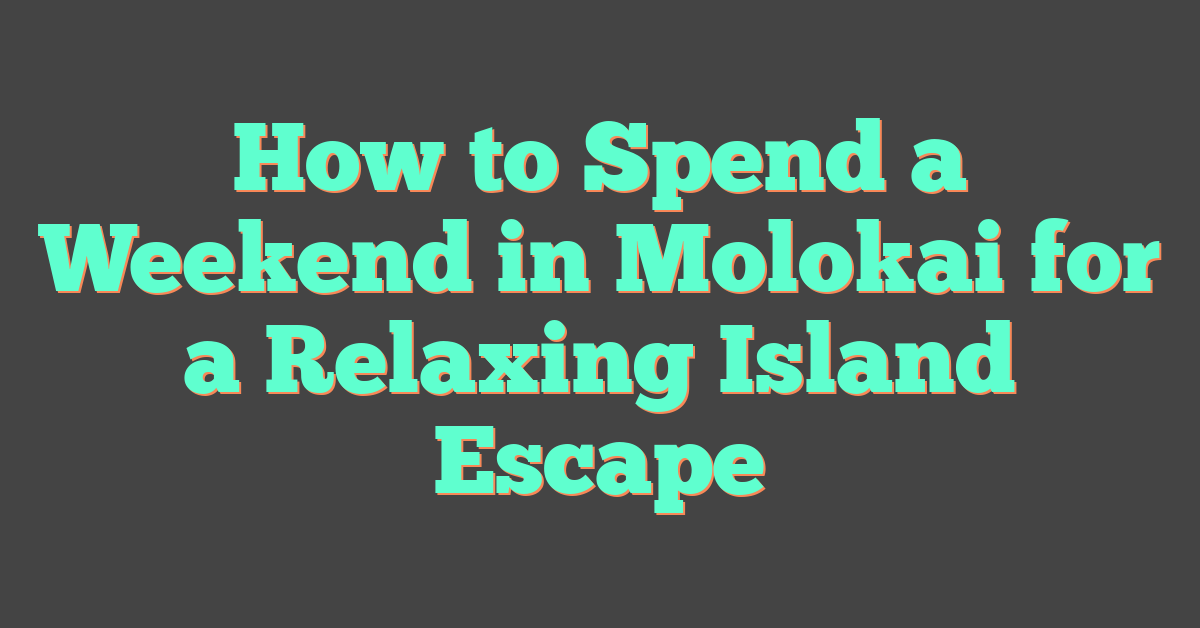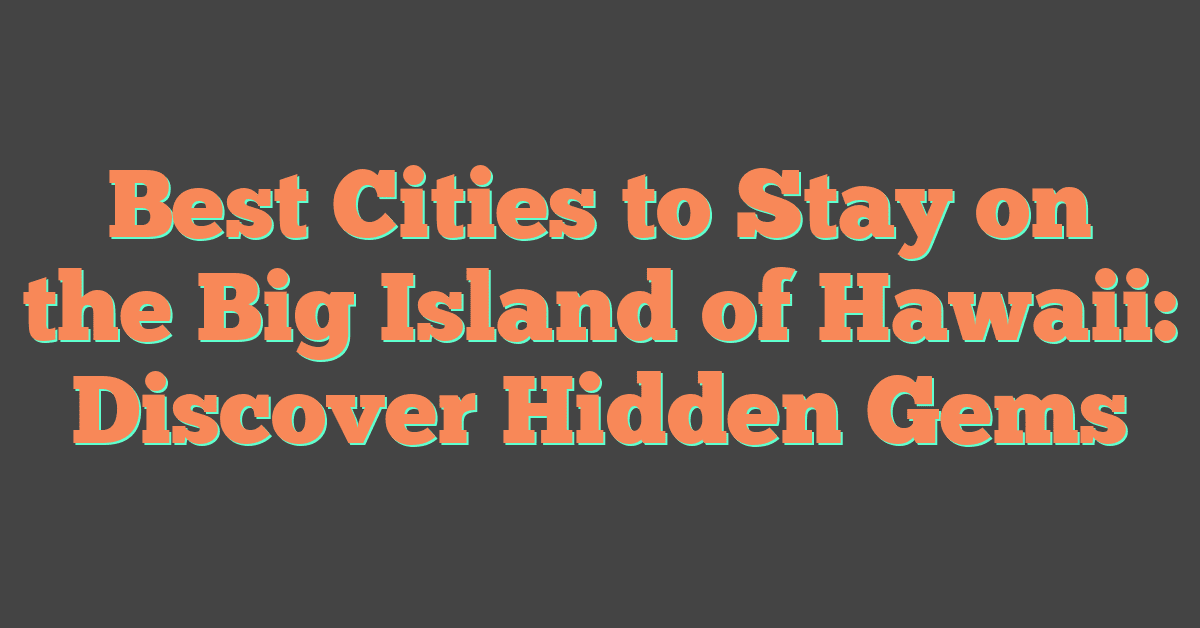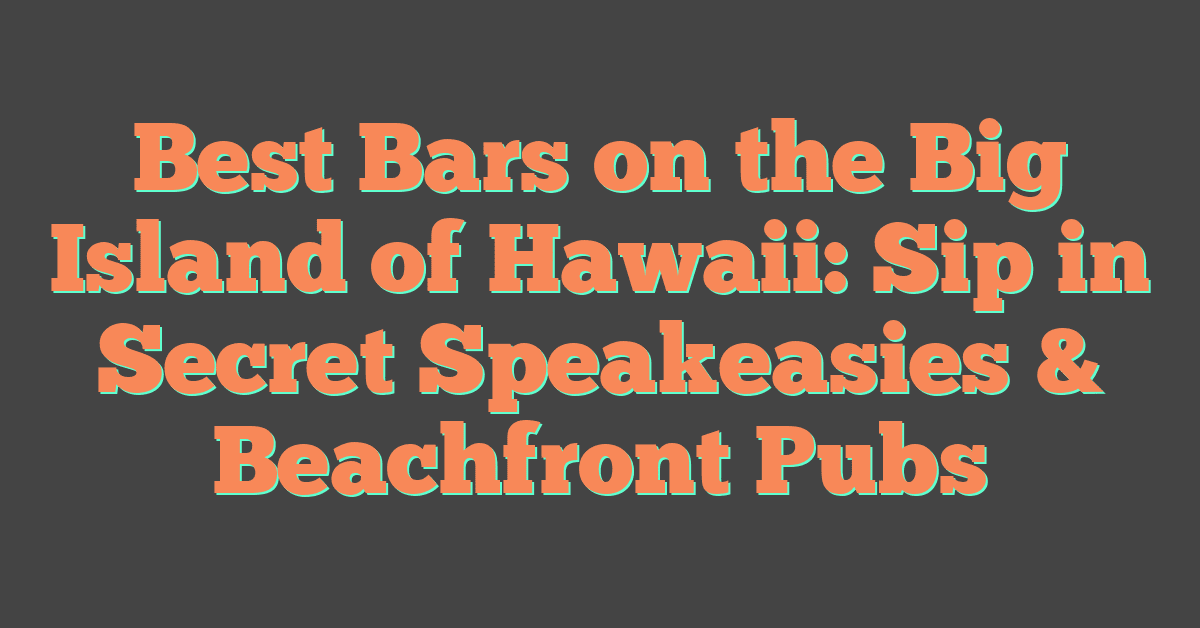Molokai offers a slower pace that feels far from the busy resorts of other Hawaiian islands.

With open landscapes, quiet beaches, and small-town charm, it’s the kind of place where time feels unhurried.
A weekend here lets you explore natural beauty, learn local history, and enjoy authentic island life without crowds.

In just two days, you can hike into lush valleys and relax on wide stretches of sand like Pāpōhaku Beach.
You can also take in sweeping ocean views from coastal trails.
Step into Hawaii’s past at Kalaupapa National Historical Park and hear stories of resilience and community.
Between outdoor adventures and cultural experiences, you can sample fresh island flavors at local markets and family-run eateries.
By focusing on a few key spots, you can make the most of a short stay and feel the true spirit of Molokai.
Essential Weekend Planning Tips

Most visitors arrive by small plane or ferry.
Molokai enjoys warm weather most of the year, and careful planning helps keep costs low.
Transportation, timing, and smart spending choices help make a short trip smoother and more enjoyable.
How to Get to Molokai
Most travelers fly into Molokai Airport (MKK), about 7 miles from Kaunakakai.
Small inter-island airlines offer direct flights from Maui and Oahu.
These flights usually take under 30 minutes.
A ferry from Maui also serves the island, but its schedule is limited and depends on weather.
Flying is faster and more reliable.
Renting a car is the best way to get around, since public transportation is minimal.
Book ahead, especially during busy travel periods.
Quick options to reach Molokai:
| From | Method | Approx. Time |
|---|---|---|
| Maui | Flight | 20–25 min |
| Oahu | Flight | 30–35 min |
Best Time to Visit
Molokai has warm temperatures all year.
The driest months, April through October, are best for hiking and beach visits.
Winter brings more rain and higher surf on the north shore, which can limit some activities.
This is also the season for whale watching.
If you want fewer crowds, visit in late spring or early fall.
These months often have lower prices and a quieter atmosphere than summer or holiday weeks.
Budget-Friendly Travel Advice
Molokai is less tourist-driven than other Hawaiian islands, but expenses can add up.
Staying in vacation rentals or small inns in Kaunakakai is often more affordable than large resorts.
Shopping at local markets and cooking some meals saves money.
The Molokai Farmers Market on Saturday mornings offers fresh produce and local goods.
Free and low-cost activities include visiting beaches like Pāpōhaku Beach, hiking in nature preserves, and exploring historical sites such as Kalaupapa National Historical Park.
For more ideas, check this list of things to do in Molokai.
Book flights and accommodations early to get better rates, especially during peak seasons.
Exploring Molokai’s Natural Wonders
Molokai has quiet trails, wide beaches, and lush valleys that feel far from crowded tourist spots.
You can walk through native forests, see rare plants, and enjoy some of Hawaii’s longest stretches of sand.
Local guides can lead you through many places and share history and cultural knowledge.
Halawa Valley and Cultural Hike
Halawa Valley, also written as Hālawa Valley, is one of the oldest settled areas in Hawaii.
It is home to waterfalls, taro fields, and ancient Hawaiian sites.
The valley’s most famous landmark is Hipuapua Falls, which drops into a pool surrounded by steep green cliffs.
Access to the valley is only possible with a guided cultural hike.
Local families lead these tours and share stories about the valley’s history, traditions, and plants.
The walk is about two miles each way and covers some uneven ground.
Hikers move through tropical vegetation, cross small streams, and see old stone walls.
The experience blends nature and culture and gives insight into Molokai’s past.
Book in advance, as group sizes are small.
Papohaku Beach Adventures
Papohaku Beach stretches for nearly three miles and is one of Hawaii’s longest white-sand beaches.
It sits on Molokai’s west end and is known for its open space and quiet atmosphere.
The beach is perfect for long walks, beachcombing, and watching sunsets.
Swimming can be rough in winter due to strong currents, so always check conditions before going in.
Nearby Kepuhi Beach sometimes has calmer waters, making it good for wading or picnicking.
Papohaku also has picnic tables, restrooms, and camping facilities.
This area is perfect for enjoying the coast without crowds.
Kamakou Preserve Trails
The Kamakou Preserve protects over 2,700 acres of native rainforest on the slopes of Molokai’s highest mountain.
The Nature Conservancy manages the preserve, which is home to rare plants and birds found only in Hawaii.
The Pepeopae Bog Trail is the main hiking route.
A narrow boardwalk winds through cloud forest and ends at a viewpoint overlooking the Molokai sea cliffs.
Wear sturdy shoes and bring rain gear, as the area is often wet and muddy.
Guided tours are available on select days and help hikers understand the preserve’s ecosystem and conservation efforts.
For more information on planning activities, see this guide to how to spend a weekend in Molokai.
Discovering Molokai’s Unique History and Culture
Molokai’s past is rooted in Native Hawaiian traditions, community resilience, and stories of survival.
Historic sites, small-town life, and preserved landmarks let visitors see how the island has kept its identity over time.
Kalaupapa National Historical Park Experience
The Kalaupapa Peninsula is one of the island’s most important historic areas.
In the 19th and 20th centuries, people with Hansen’s disease lived here in isolation.
Today, Kalaupapa National Historical Park preserves both the natural beauty and the human history of the site.
You can learn about Father Damien and Mother Marianne Cope, who cared for residents despite the risks.
Their efforts shaped the community.
Access to the peninsula is restricted to protect residents and the environment.
You need a permit to enter, and most visitors join guided tours that share personal stories and historical context.
If you cannot visit the settlement, the Kalaupapa Overlook gives a striking view from above.
The lookout offers a safe way to see the peninsula’s landscape and understand its place in Hawaiian history.
Kaunakakai Town and Local Life
Kaunakakai Town is Molokai’s main hub.
It has no traffic lights, but you’ll find a pier, small shops, and local markets where residents gather.
The Saturday morning farmers’ market is a great place to find fresh produce, baked goods, and handmade crafts.
You can also meet people and hear about island life from locals.
Historic buildings and family-run businesses line the main street.
Many shops sell goods made on Molokai, supporting the island’s economy and traditions.
Eating at a small café or plate lunch spot gives a taste of everyday life.
The pace is slow, and most people know each other by name.
Molokai Museum and Heritage Sites
The Molokai Museum and Cultural Center gives a closer look at the island’s past.
You’ll find exhibits from the sugar plantation era and displays of Native Hawaiian artifacts.
A highlight is the restored R.W. Meyer Sugar Mill, which shows how people processed sugar in the late 1800s.
Interpretive signs explain each step in simple terms.
The museum grounds also feature photos and stories about early Hawaiian life, land use, and cultural practices.
Visiting these heritage sites helps travelers understand how Molokai’s history connects to the present.
More details about cultural attractions are in this Molokai heritage guide.
Savoring Local Flavors and Experiences

Molokai’s food scene blends long-standing traditions with small-town charm.
You can enjoy late-night bakery treats, fresh island-grown coffee, and locally made snacks while meeting the people who make them.
Small shops and farms give a direct connection to the island’s culture and flavors.
Kanemitsu Bakery and Hot Bread
Kanemitsu’s Bakery in Kaunakakai is a local favorite.
By day, it sells fresh breads and pastries.
At night, a side alley opens for their famous hot bread, served warm with fillings like cinnamon, butter, or strawberry jam.
The hot bread tradition starts after 7:30 p.m., drawing both residents and visitors.
People line up in the dimly lit alley and chat while they wait.
Staff hand out large foil-wrapped loaves, perfect for sharing.
Many recommend eating it right away while it’s still soft and warm.
It’s a simple treat that captures the relaxed, community feel that makes Molokai unique.
Taste of Molokai: Where to Eat
Local restaurants on the island focus on fresh, local ingredients. A Taste of Molokai often features plate lunches with kalua pork, fresh fish, or chicken long rice.
Food trucks and small cafés offer poke, burgers, and taro-based dishes.
Popular stops include:
- Kamoi Snack-n-Go – This spot serves ice cream with flavors like haupia, guava, and Kona coffee.
- Coffees of Hawaii – The plantation café brews locally grown coffee and serves light bites.
- Small mom-and-pop diners – These diners prepare home-style meals at fair prices.
You usually don’t need reservations. However, hours can be limited, so check ahead, especially for dinner.
Unique Local Stops and Souvenirs
Molokai has many small businesses where travelers can find edible souvenirs and handmade goods. The Post-a-Nut program at the Hoolehua Post Office lets visitors decorate and mail a real coconut anywhere in the world.
The Molokai Plumeria Farm offers tours where guests can see blooming trees. Visitors can also buy fresh leis there.
Local growers sell macadamia nuts at small roadside stands. These nuts make easy-to-pack gifts.
At Coffees of Hawaii, visitors can buy beans roasted on-site to bring home. These stops give travelers a chance to meet locals and learn about island life.




